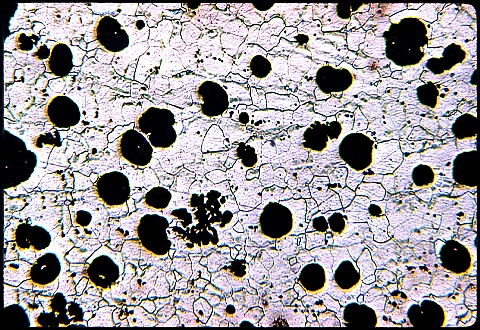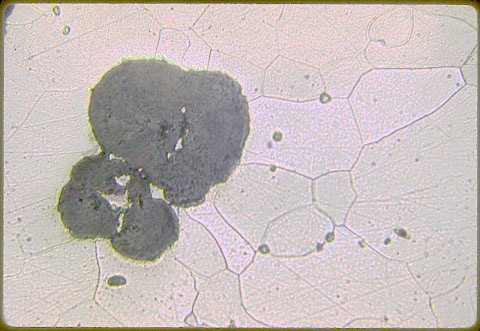
The photomicrograph at left shows the rounded shapes of the graphite nodules at 100X. These shapes are typical in what is called ductile iron or nodular cast iron.
This structure is obtained by inoculating the melt just before pouring with an element which changes the surface chemistry of the graphite. This element (usually magnesium) reacts with surface active impurities (probably sulfur) so that the graphite can grow in a direction perpendicular to the basal plane of the hexagonal graphite crystal structure. In grey cast iron the graphite flakes grow edgewise.

Think about the vast economic effect of obtaining these ductility enhancing nodules in castings without the prolonged annealing treatment required to make malleable iron. The savings in energy more than cover the extra energy needed to make the metallic magnesium (which is usually produced as magnesium ferrosilicon).
Did you notice the coring in the ferrite in the first photomicrograph ?
Specimen 5 is a bullseye
nodular iron.